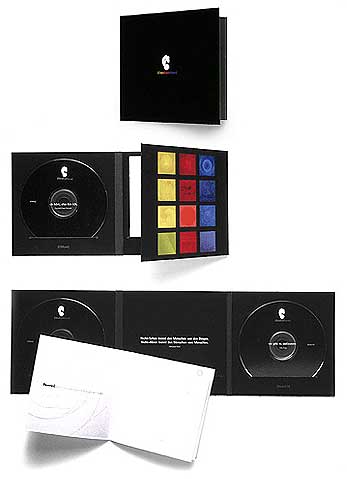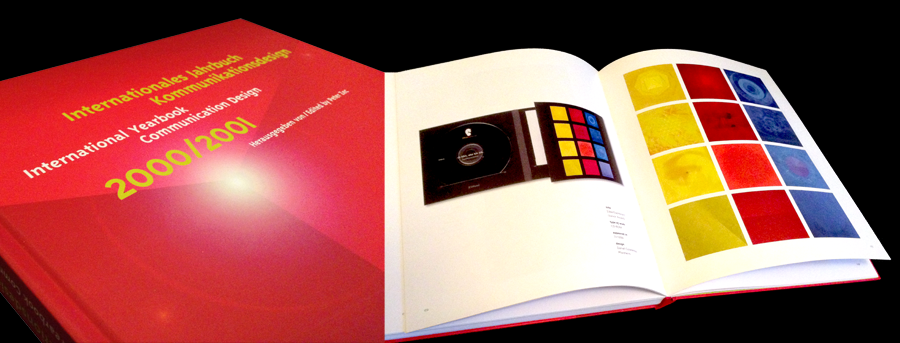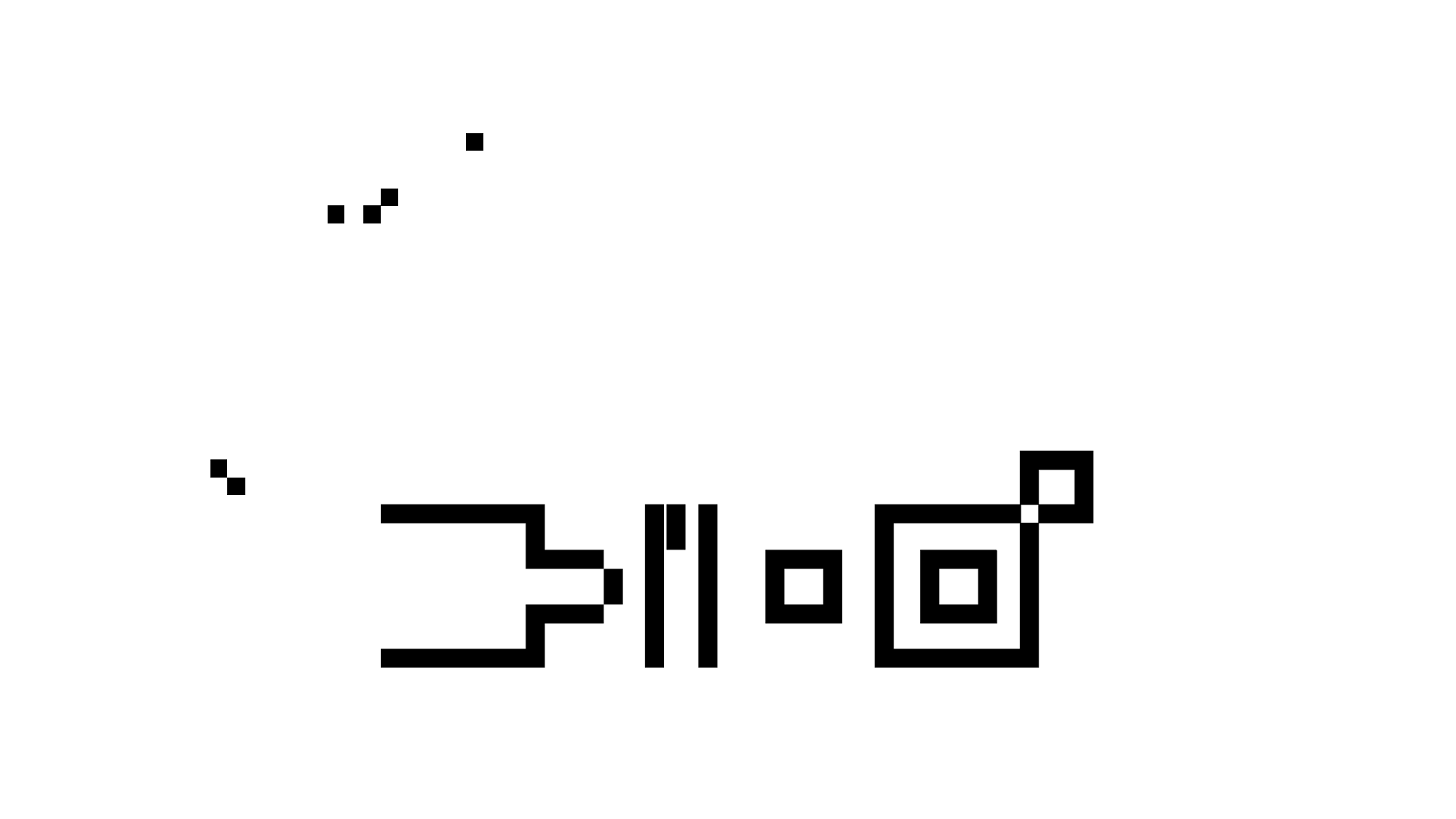![[AboutHearing]](http://www.corlop.ca/wp-content/plugins/justified-image-grid/timthumb.php?src=http://www.corlop.ca/wp-content/uploads/2013/04/co-AboutHearing-Logo.gif&h=300&w=300&a=t&q=90&f=.gif)
Lo siento, este contenido solo está disponible en inglés y aleman …
Our perception of the world is weighted increasingly towards the visual, with the result that our capacity to hear is continually shrinking. These days, we make only partial use of our hearing. The ear has become enslaved to the eye. In our society, the true sense of hearing is gradually being lost.
[AboutHearing]
A CD-ROM that investigates the phenomenon of hearing
The [AboutHearing] CD-ROM is intended to counteract this trend. An interactive journey through 12 audio scapes leads the user into the ear and beyond, with the aim of re-awakening a realization of what it means to hear.
Humanity taps into the sonic world by hearing.Sound waves entering the ear are transformed into emotional utterances, speech and music, not to mention noise and crashes. In addition, our auditory apparatus performs a crucial function in the world of communication: the ability to speak cannot develop normally without it.
By the time an unborn child is five months old, the inner ear is fully developed. It is the only organ in the body which does not continue to grow following birth. Equally, should a dying person no longer have the strength to open his or her eyes, it is the ears which maintain a link with the world. Hearing therefore represents the completion of the cycle that joins life to death.
Sights and sounds
Audio-visual media, such as CD-ROMs and DVDs, allow the combination of sights and sounds on a very small area. On the Internet too acoustic stimuli are now dominant.
Music, as Richard Wagner said, is the best aid to strong feelings and emotions. Indeed, sound comes into its own when simply seeing something would leave an audience cold and unmoved. One cannot imagine cinema without the synaesthetic effect of film music.
In the CD-ROM, the emphasis is on auditory perception.
Visual elements on the CD-ROM [AboutHearing] are limited to basic shapes and colours. The acoustic element, a combination of pure notes and sounds, is also intended to be minimalist in style.
The minimalist approach to sights and sounds makes this CD-ROM [AboutHearing] a timeless source of information. The playful treatment of the abstract «audio scapes» allows the user ample scope for imaginative interpretation.
A vocal guide for the user
Speech as a mode of communication is of central importance to »Hearing«. As well as imparting the information on the 12 «audios capes», a voice accompanies the user on his / her journey through them. Possible choices are also communicated to the user verbally. The journey charts a way through invisible spheres of auditory sensation that await the user at the end of each «audio scape».
Sound navigation
The CD-ROM [AboutHearing] is based on sound navigation.
The user navigates on spheres of auditory sensations.
Conclusion
Acoustic elements in the environment have a huge impact on the well-being of humanity. Acoustic design is therefore becoming an important consideration in our efforts to actively improve the environment. The use of sound, music, noises and speech in a visual and product-orientated design has the effect of supporting and enhancing its expressiveness.
This CD-ROM [AboutHearing] is not just an application, it is also intended to inspire the world of design.
Content
The listener can select between three levels each covering four topics.
[Otology], the science of hearing – provides information regarding medical findings. Subjects range from the development of the ear in the womb, the structure of the ear, the function of hearing and the hearing of a dying person.
[TheThirdEar], the philosophical level – poses questions.
Questions, some of which, the user must answer for himself.
What does the unborn child in the womb hear? Can we think with our ears? What does speech tell us about hearing? Why is it so much worse to be deaf than blind?
[SoundAndTone], describes the world of music, art and acoustics. Surface sounds, noise and silence lead the listener to the fringes of acoustics and hearing. Sounds and tones combine music and the visual arts.
Design
Three basic shapes and colors have been assigned to levels, symbolizing science, the humanities and (musical) acoustics in the CD-ROM.
The red square stands for [Otology].
The yellow triangle stands for [TheThirdEar].
The blue circle stands for [SoundAndTone].
The shape and color of the mouse pointer and the audio scape indicate which of the three levels is active. Select and action modus can also be recognized by the type of mouse pointer. The mouse pointer in the form of a triangle, a square or a circle is only used for navigation between the audios capes – The mouse pointer in the form of a cross hair is suitable for carry out precise actions.
The user has several possibilities to jump from one audio scape to the other. Vertically, the user moves within the three levels. The starting point is one of the three menus. These can be approached from the landscapes.
Horizontally, the user can go to type-related subjects of the other two levels. These correspond roughly regarding contents, design and function. Options and information are communicated verbally to the user.
The audios capes are designed in such a way that the user can play around with the subject for some time before he gets to the information and can either return to the »audio scape« or go on to others.


Awards & Exhibitions
Cannes, France
Exhibitor
Karlsruhe, Germany
Aussteller
Vienna, Austria
Presentation
Presentation and Exhibition
Special prize of MFG
Student Award 2000
Nomination »Top five of Europe«
Award 2000
High Design Quality

